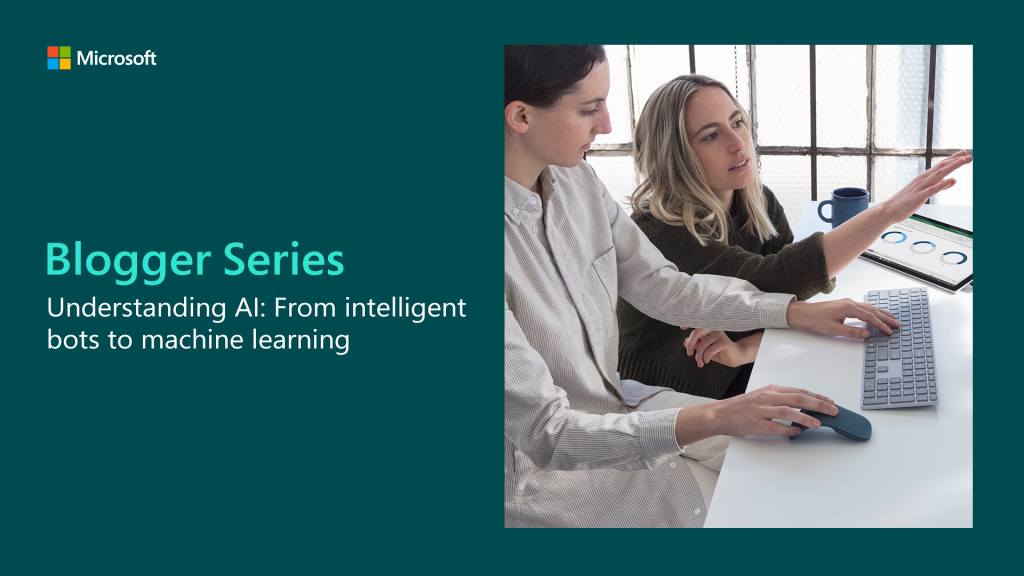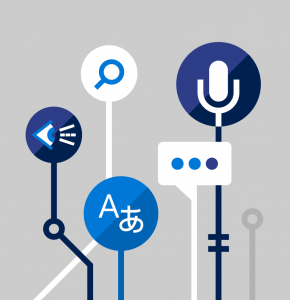
Understanding AI: From intelligent bots to machine learning

I’m not ashamed to admit that it’s taken me a little while to get my head around the two letters we’re seeing more and more: AI. Speaking with customers and partners has made me realise that I’m not the only one.
However, I’m also very aware I’ll probably look back on this post in a few years and laugh. AI will be woven into everything we do. I imagine people would have had the exact same feeling with the internet was created.
Making sense of the intangible
The concept of AI made me nervous. Not because of the negative connotations in the media. But I felt like I didn’t fully understand it.
It’s a bit of a buzzword in our industry. Everyone knows it’s important. Some know why, some don’t care, and some just pretend they understand. Our latest AI study shows 51% of organisations in the UK have no AI strategy. I was definitely in the latter group, until recently.
Part of my problem was that I couldn’t see AI. It wasn’t a specific application or software; it was invisible. What I’ve come to realise is that AI is a set of technology and tools. It’s increasingly being woven into everything we do.
Whether we realise it or not, we’re already using it in our everyday lives. Tools like spam filters, purchasing recommendations, or the friendly customer service chatbot we speak to online.
AI isn’t something you buy and it works immediately. It needs data – and most importantly, good data – to draw insights and recommendations. It needs the right models to learn from, and it must be used ethically and responsibly.
What is AI?
It’s a critical time to get up to speed. The AI report showed that organisations investing in establishing the right approach to AI now outperform those that don’t by 9%.
I learn best through stories and seeing how things work myself. It’s through my daily experiences at Microsoft, and encounters with partners and customers that I’ve come to understand AI. I wanted to share some of my favourite examples to help bring the technology to life for you.
AI is the ability for us to use computing advances to create intelligent machines. These compliment human reasoning and make processes quicker or more accurate. This includes the below technologies.
Making sense of machine learning
This is pretty much what it says on the tin. Using machine learning to predict and analyse data for business impact. Rolls Royce is using Azure Machine Learning to monitor their jet engines, for example. This allows them to proactively predict down time and monitor the efficiency of the engine. It also allows them to make a new business model around selling that data and drawing insights from the findings.
Other examples that helped me make sense of the technology and its benefits include:
- ThyssenKrupp drawing on the Internet of Things (IoT) and Microsoft technologies by connecting their elevators to the cloud. This allows them to significantly improve operations. It also means they can offer something completely new to their industry: predictive, and preemptive maintenance.
- Transport for London (TfL) reviewing users’ journeys
- RAC has adopted Microsoft Azure to provide a secure platform for processing and storing huge amounts of data in real-time. They are using the data to provide new services for RAC customers. Their future could involve proactive data, including using AI for roadside breakdown support.
Bots made simple
 Intelligent bots can be built, connected, deployed, and managed by organisations to interact with customers and internal users. This isn’t just on a website – you may have been speaking to a bot within an app like Cortana, Microsoft Teams, Skype, Slack, Facebook Messenger, and more.
Intelligent bots can be built, connected, deployed, and managed by organisations to interact with customers and internal users. This isn’t just on a website – you may have been speaking to a bot within an app like Cortana, Microsoft Teams, Skype, Slack, Facebook Messenger, and more.
A key learning for me was that bots don’t have to be virtual. Basic queries are bread and butter for a bot. But you can also layer a bot’s communication, so it intelligently speaks to a customer until the point where the conversation is deemed either too bespoke, or an employee needs to step in. You can also layer on Cognitive Services (more on that below) to make this form of communication even more intelligent and interactive for the user.
This is great news for any customer service centre that requires a more efficient or cost-effective way of servicing low-level queries. Or a more effective triage system for routing those queries from various sources to the right people more efficiently.
Newcastle City Council’s ‘WasteBot’ is a fantastic example of the impact this can have. They implemented a chatbot for basic services such as applying for permits and checking next household waste collection dates. ‘WasteBot’ took what had previously been two-week, manual processes to just under 90 seconds.
 Demystifying cognitive services
Demystifying cognitive services
These are effectively intelligent algorithms that can be built into websites, apps, and bots. They hear, speak, understand, see, and interpret user needs through natural communication. To keep it simple, I’ve listed some of the most recent examples I’ve seen:
Vision
Analyses images and videos for content and other useful information. An incredible example of this is Seeing AI, a free app that narrates the visual world for a blind or partially sighted person through their mobile or tablet device.
Speech
Speech Translator enables developers to add real-time translation to their mobile, desktop, and web apps. The latest capability sees speech being used as a form of verification to identify the speaker. Soon we’ll be logging into our mobile banking with just our voice!
Language
Understands sentences and intent, rather than just words. Comprehends sentiment from users’ communication and reacts based on that insight. An American talent agency is actually using this technology to help build behavioural profiles of candidates.
Knowledge
Maps complex information and data in order to surface insights that would take years for humans. Could you find a new trend in your data? Could a finance organisation use this to review data to find trends around fraud and theft?
Search
Connects to Bing APIs to enable your app or service to use search services to comb billions of webpages, images, videos, and news articles.
What does it all mean for you?
It’s not if, but what AI can do to help your organisation. You can make almost any business process artificially intelligent. But you need to ensure you’re drawing insights from bias free, organised, and accurate data. Otherwise the insights you receive will only be as good as the source it reads from.
AI is a constantly evolving solution that is becoming ever more efficient and insightful. Hopefully I’ve given you a small taste of what it is, and how organisations are already using it with huge success. As a next step, I’d strongly recommend that you read the recent Microsoft UK AI report to understand the opportunity AI could present to you and your business. Also think about how you can start developing your AI skills.
[msce_cta layout=”image_center” align=”center” linktype=”blue” imageurl=”http://approjects.co.za/?big=en-gb/industry/blog/wp-content/uploads/sites/22/2019/01/ethical-approach-to-AI.png” linkurl=”http://approjects.co.za/?big=en-gb/athome/digitalskills/exceed/” linkscreenreadertext=”Develop your AI skills” linktext=”Develop your AI skills” imageid=”6262″ ][/msce_cta]
About the author
James and his team are responsible for supporting and transforming around 400 healthcare, local regional government, and housing customers on their journey to the cloud. Having worked at Microsoft for over 10 years, James has worked with customers from a variety of industries – from insurance and manufacturing, to media, and public sector. James is passionate about helping customers realise and reap the benefits of implementing technology.





